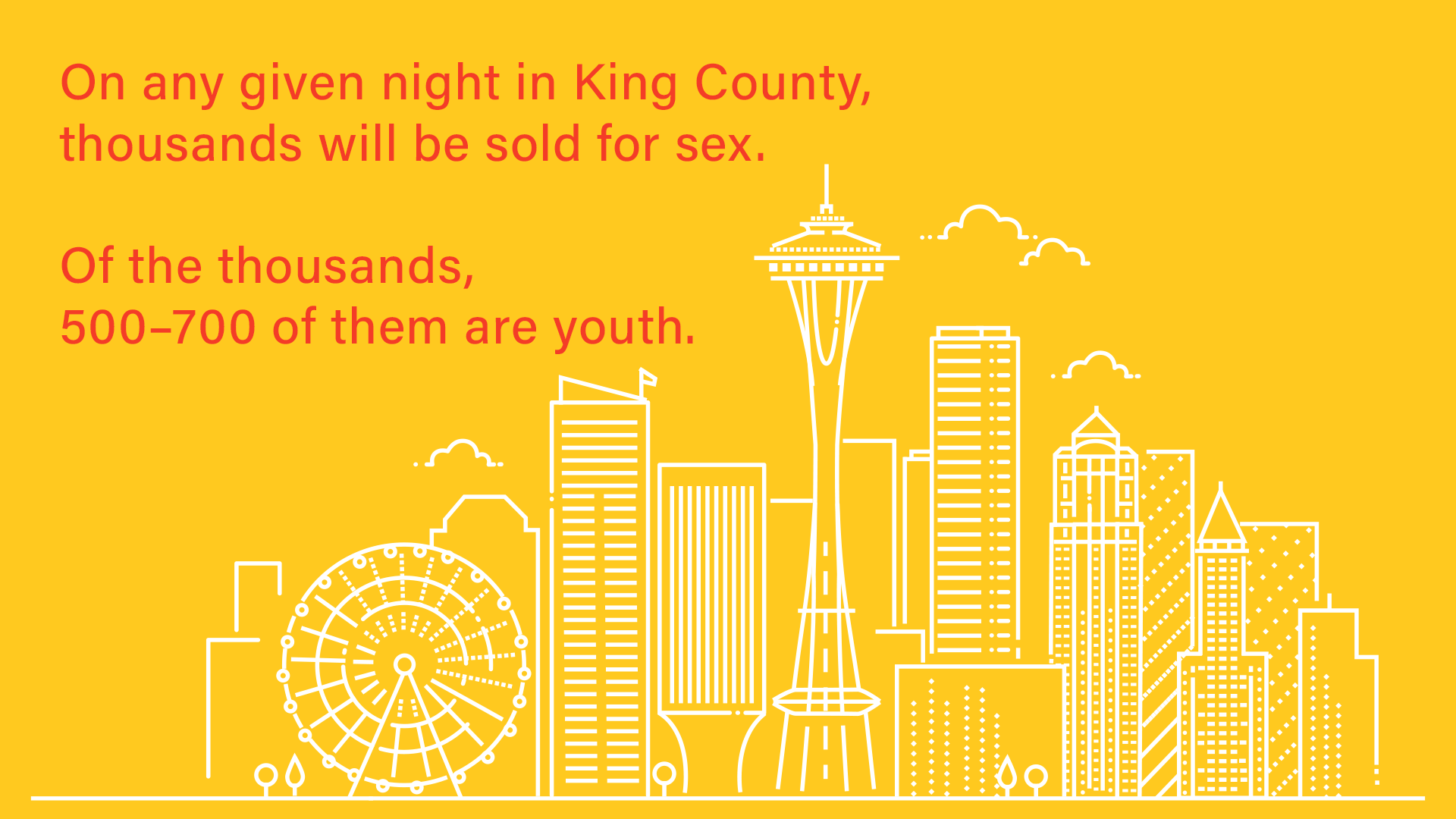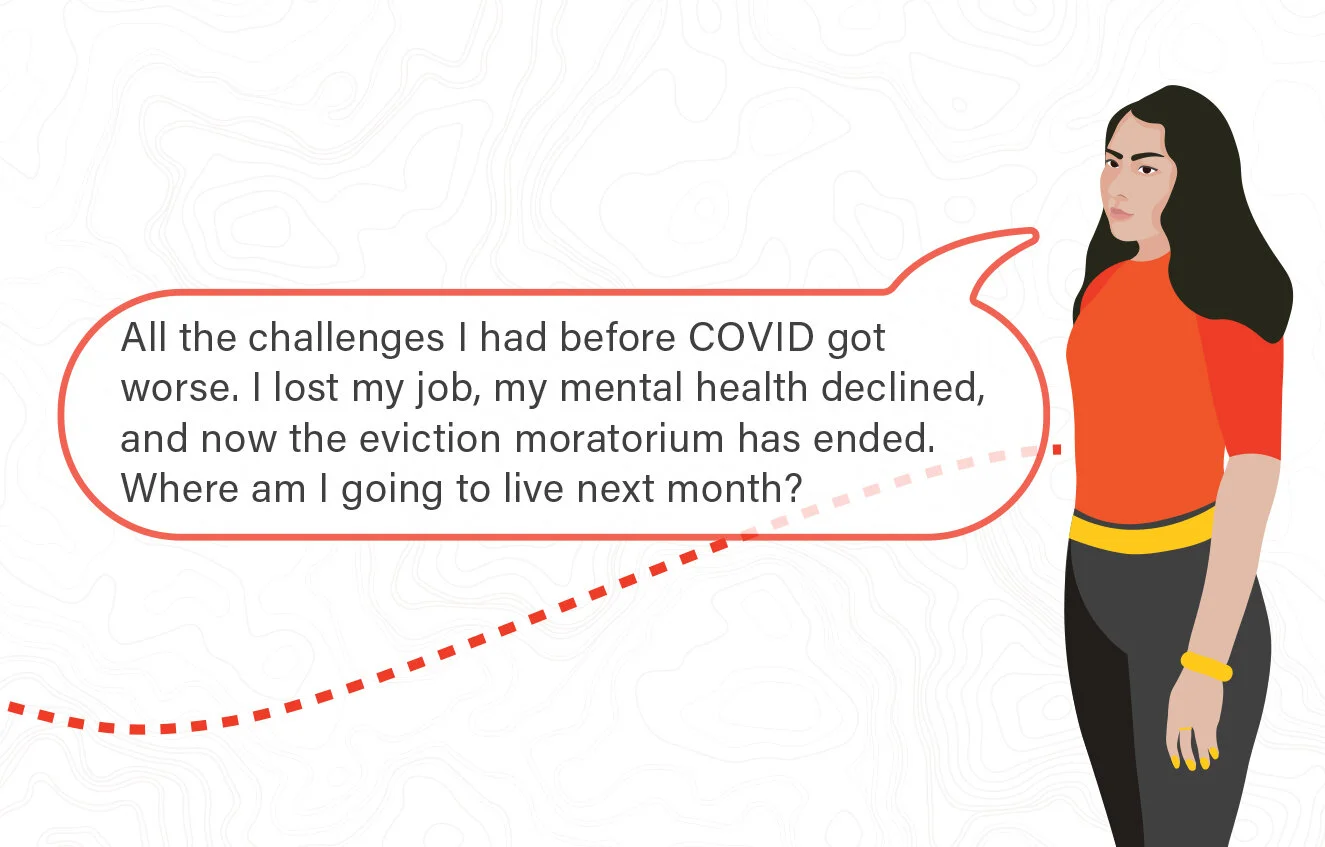On any given night in King County, thousands will be sold for sex. Of the thousands, 500–700 of them are youth.
Sexual exploitation usually starts at a young age.
As you read the stories of the survivors who boldly and generously shared their stories with us, you may notice several common factors, including that every one of them entered sexual exploitation or trafficking before they were 18 years old. In sex trafficking, this is the norm.
Commercially Sexually Exploited Children in Seattle/King County 2019 Update, a local report by Debra Boyer, PhD Boyer Research, puts some statistics about sexually exploited youth to the stories we hear.
14.4 - The average age of entry into commercial sexual exploitation
46% of sexually exploited youth have experienced housing instability
66% of sexually exploited youth have experienced homelessness
“Youth” is commonly defined in social services demographics as 24-years-old and younger.
Barriers to exiting the sex trade are complex and intertwined, requiring comprehensive solutions to overcome.
On average, it takes 5.8 attempts to leave the sex trade to finally, fully exit.
The ability to leave the sex trade is often hindered by an array of barriers that intersect and create the need for holistic support and care. Without income, it’s impossible to maintain a roof over your head—without a roof over your head and the privilege of basic utilities like electricity and water, it’s hard to find and maintain a job. When you add other barriers to this mix—mental health issues, addiction, trauma, and toxic relationships, getting out of this cycle becomes even more complicated and daunting.
The COVID-19 pandemic created new barriers and exacerbated long-lasting barriers for many REST clients. You’ll read about some of them throughout this report.
Sexual exploitation impacts every demographic in every region, but we know that certain sociocultural factors increase the risk for sex trafficking.
Multiple sources of data show sharp disparities between who is being sexually exploited in our community. More data on trafficked youth is available locally, but we can extrapolate that data to adults in the sex trade—knowing that trafficked youth often grow up and remain in the sex trade.
The most recent King County data on sex buyers reveals that local sex buyers are predominantly white, male, and with above-average education.
When we compare the disproportionalities in the race and gender of those who are exploited, and those who are exploiting—we see the harmful effects of misogyny
and racism.
Race and gender are not the only sociocultural factors that increase the risk for sex trafficking.
Risk also increases with Adverse Childhood Experiences (ACEs) such as abusive home situations, and the impacts of poverty, such as homelessness, having been placed in foster care or being a part of a minority gender identity or sexuality group.
Studies indicate that 50–90% of minor victims of sex trafficking had contact with the child welfare system
58% of LGBT homeless youth are trafficked, compared to 33% of homeless heterosexual youths
69% were sexually abused prior to their exploitation




